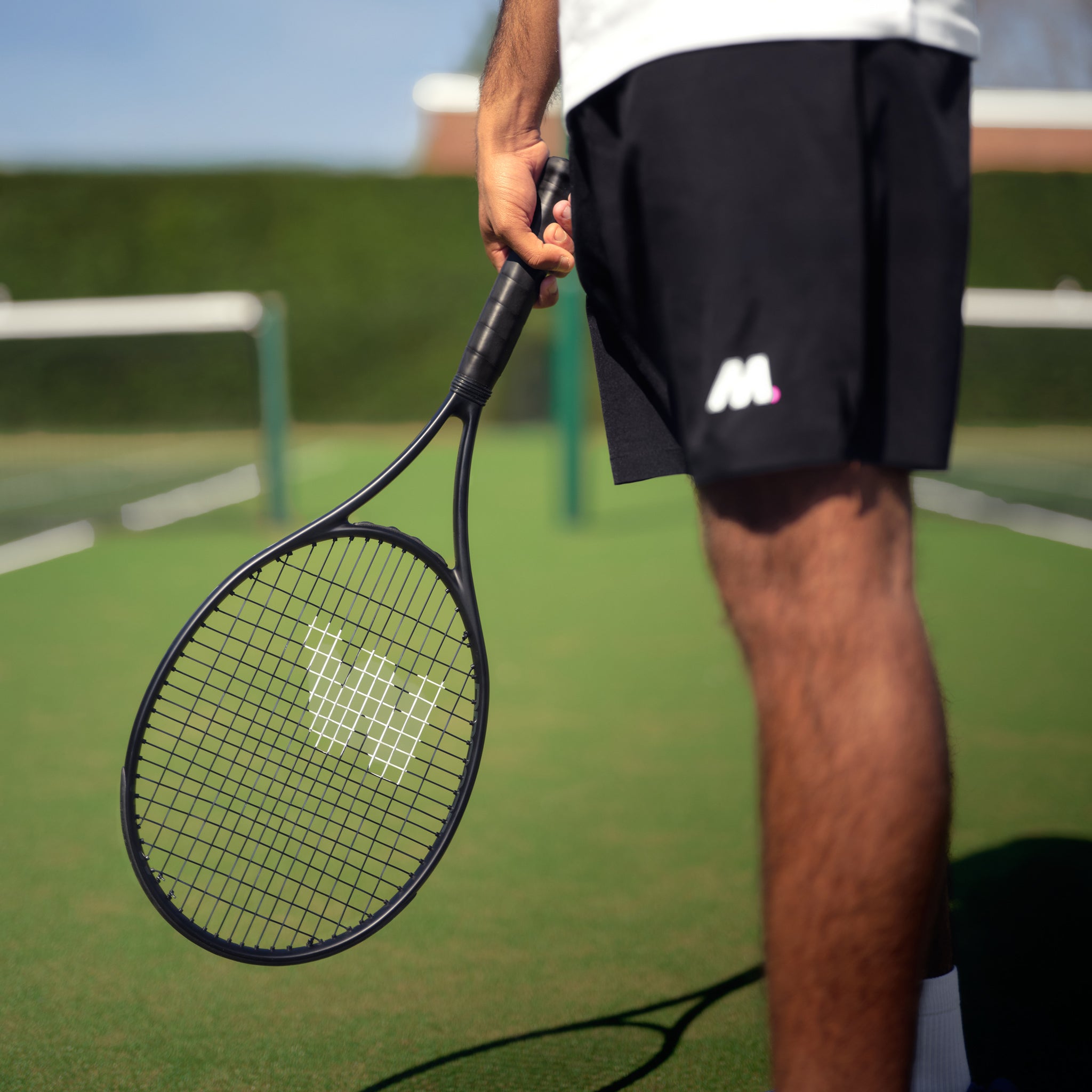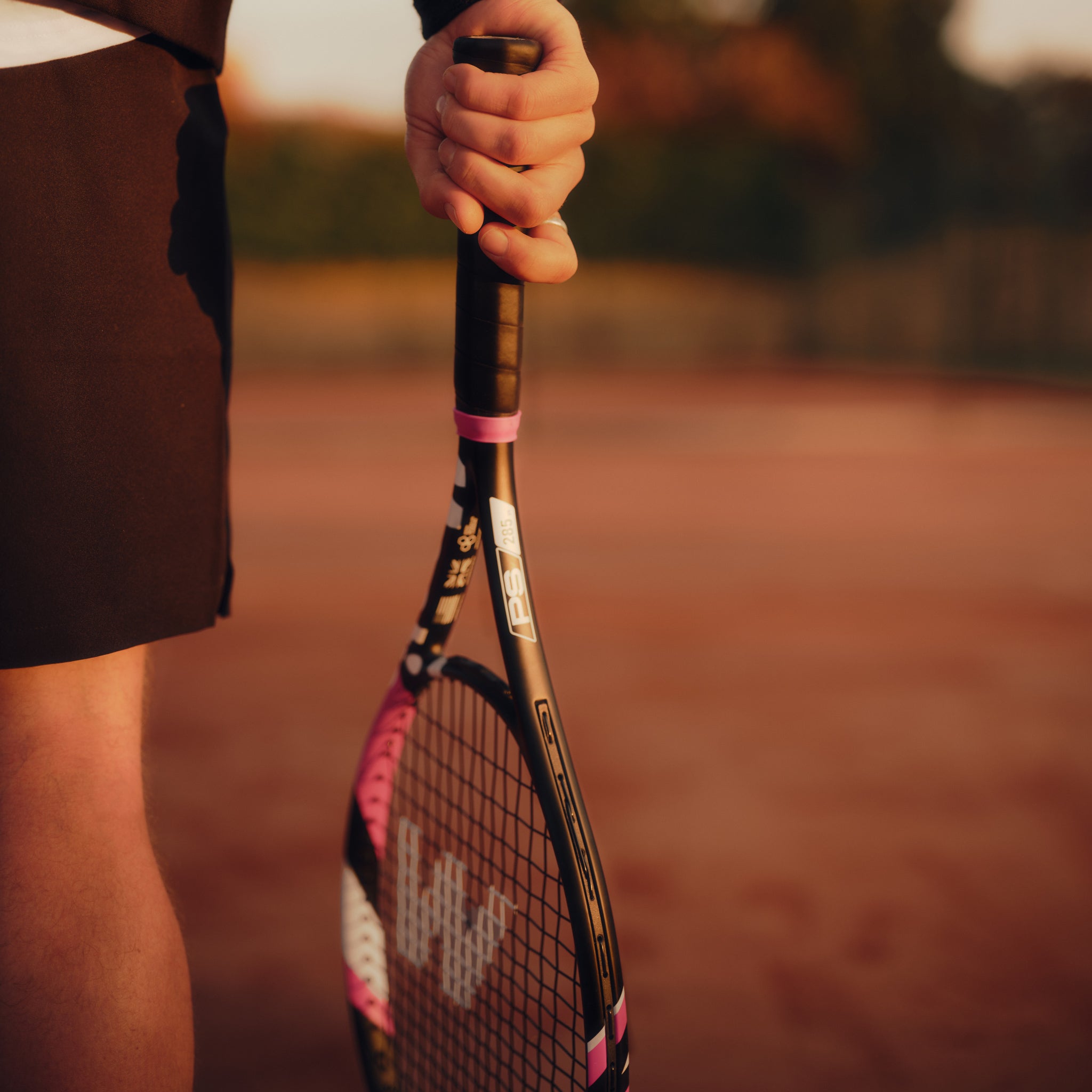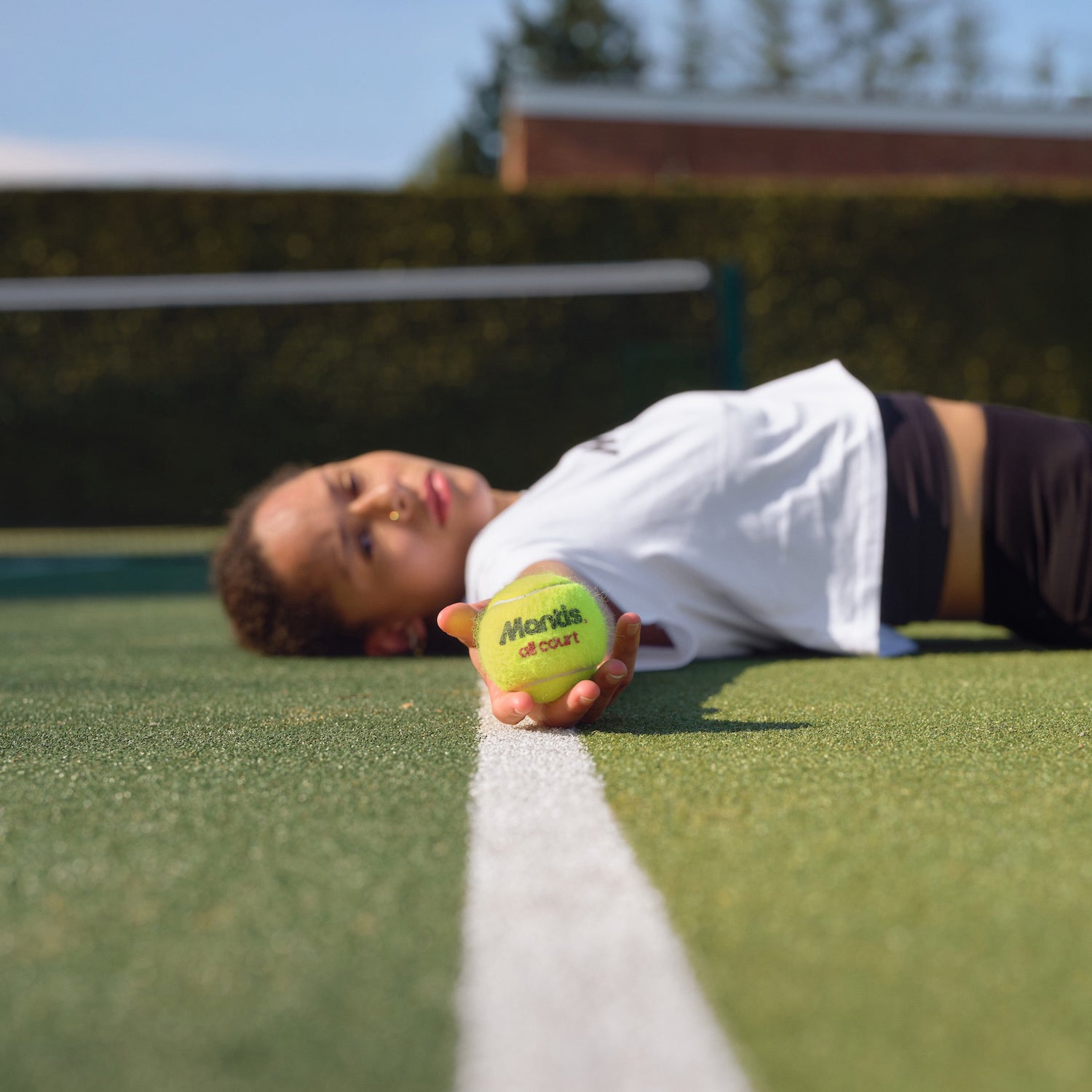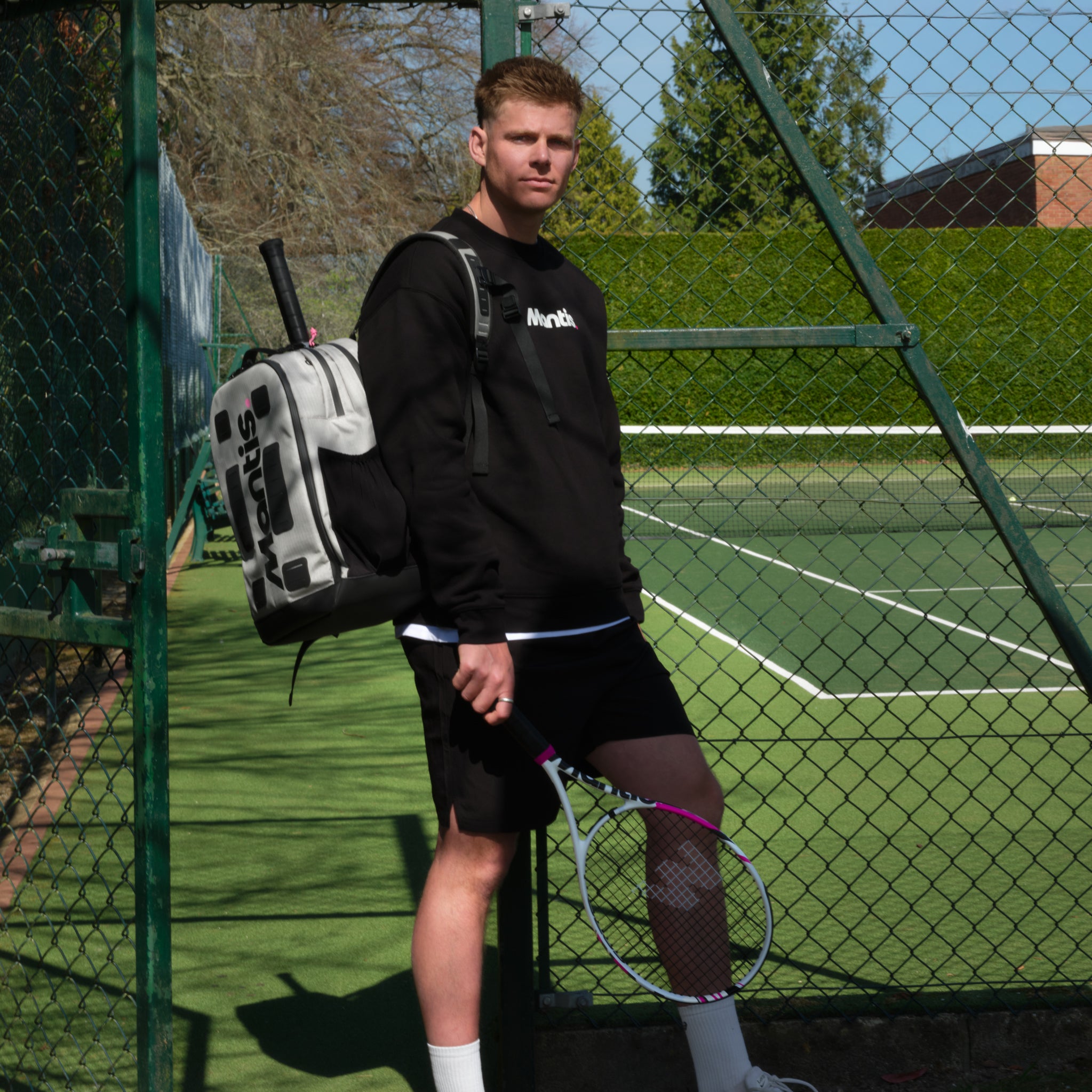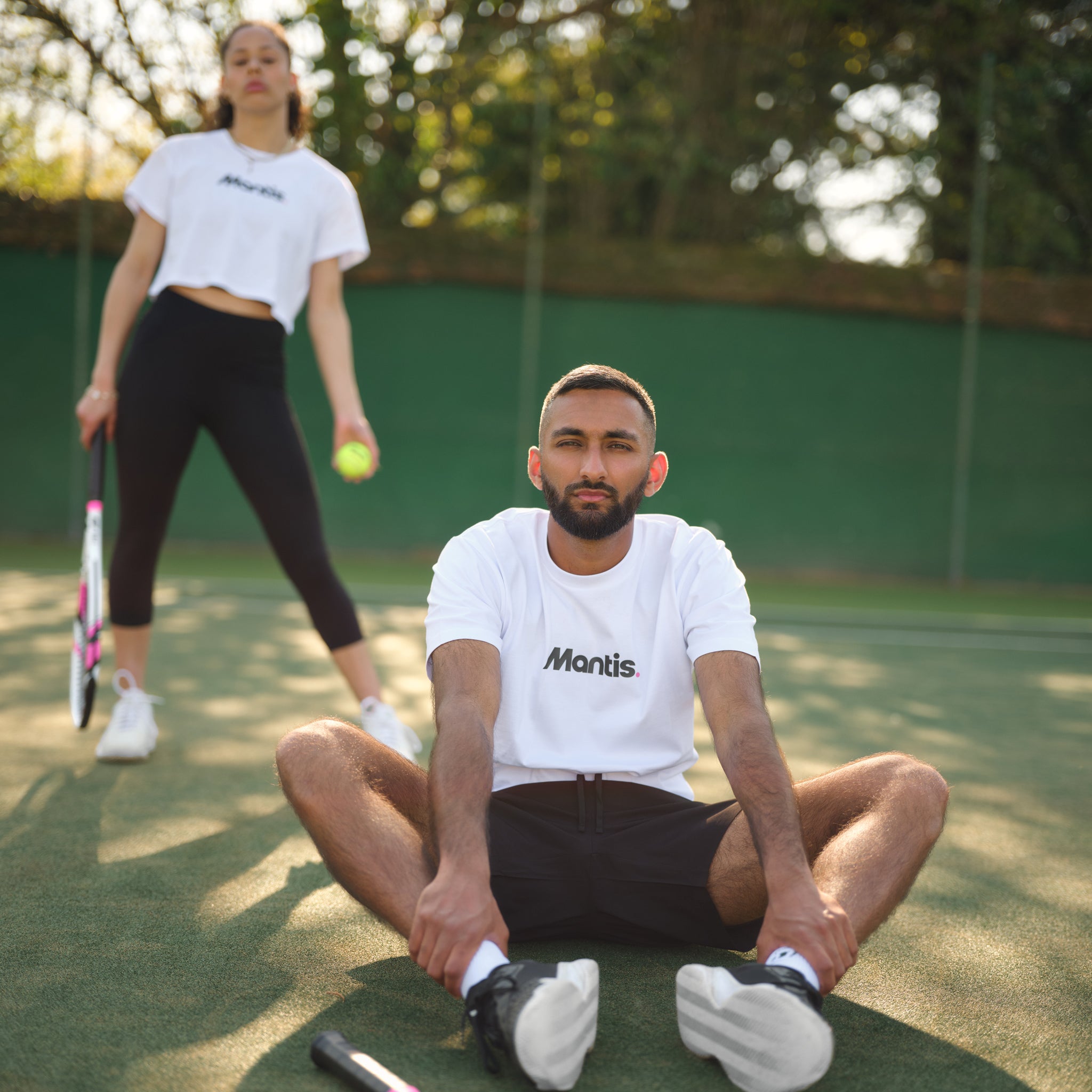
Thinking about picking up a tennis racquet for the first time? You're in great company. Tennis is seeing a massive resurgence right now, so it’s the perfect time to get involved in tennis lessons for beginners. It's more than just a sport; it’s a brilliant, growing community that’s ready to welcome new players with open arms.
Why Start Playing Tennis Now
If you've felt a pull towards the court lately, you're definitely not alone. The sport has really captured the nation's attention, spilling out from the manicured lawns of Wimbledon and into local parks and clubs everywhere. This isn't just a fleeting trend—it feels like a real shift towards a more active, social, and accessible way to spend our time.
The reasons for this boom are pretty varied. We've got inspiring victories from British stars and a collective desire to get outdoors and do something healthy. The "Raducanu effect," after Emma Raducanu’s historic 2021 US Open win, has been especially powerful. It's galvanised a whole new generation, particularly younger women, to see tennis as a sport for them.
A Surge in Popularity
This isn't just a gut feeling; the numbers absolutely back it up. Data reveals that adult tennis participation in the UK shot up by a remarkable 43% in 2022, with 4.7 million adults hitting the courts. That’s the highest it’s been since 2017.
This growth includes a big jump among women and people from lower socio-economic groups, which shows that tennis is finally starting to shake off its old, exclusive image. Thanks to the inspiration from British success stories, beginner tennis lessons are more popular than they've ever been.
What this means for you is a more diverse and welcoming atmosphere at your local courts. With so many people starting from scratch, you'll find a genuinely supportive environment as you're learning the ropes.
More Accessible Than Ever Before
Clubs and local councils have really stepped up to meet this demand, making it much easier for anyone to get into the sport. You’ll find a whole host of options tailored specifically for newcomers.
- Beginner-Friendly Programmes: Look out for courses like "Tennis Xpress" or similar intro programmes. They're designed to teach you the fundamentals in a relaxed, fun group setting.
- Pay-and-Play Courts: Forget needing an expensive club membership. More and more park courts are available to book by the hour, often for just a few pounds.
- Community Spirit: The influx of new players has created a really vibrant community. It's never been easier to find a hitting partner, join a social group, or just have a knockabout.
Tennis today is less about elite competition and more about personal enjoyment, fitness, and connection. It’s a game you can learn at any age and play for a lifetime, offering both a fantastic physical workout and a great way to meet new people.
Choosing Your First Tennis Gear on a Budget
Walking into a sports shop for the first time can feel pretty intimidating. You see rows of slick-looking racquets, walls of high-tech shoes, and all sorts of accessories that make you think you’ll need a second mortgage just to get started.
Here’s the good news: you don’t. Getting kitted out for your first tennis lesson is about making smart choices, not spending a fortune. All you really need to worry about are three things: a decent racquet, the right shoes, and a can of balls. Everything else is just a bonus for later.
Finding a Beginner-Friendly Racquet
Your first racquet is a learning tool, not a weapon for winning Wimbledon. So forget about whatever the pros are endorsing on TV for now. What you need is something forgiving that helps you find your rhythm and develop your strokes.
Look for a racquet with a larger head size, somewhere in the 100-110 square inch range. This gives you a bigger "sweet spot," making it much easier to make clean contact with the ball as you're getting the hang of things. Weight is also important; aim for something on the lighter side, between 250 and 300 grams. It’ll be easy enough to swing without tiring out your arm, but still has enough mass to give your shots a bit of oomph.
Grip size is another crucial piece of the puzzle. The wrong size can cause discomfort and even lead to injuries like tennis elbow down the line. A quick way to check is to hold the handle – you should have about a finger's width of space between your palm and your fingertips. For a deeper dive, our guide on how to choose a tennis racket is a fantastic resource.
Here’s a simple table to make sense of the key features to look for in a starter racquet.
Beginner Tennis Racquet Selection Guide
| Feature | Beginner Recommendation | Why It Matters |
|---|---|---|
| Head Size | 100-110 sq. inches | A larger surface area offers a bigger "sweet spot," making it easier to hit the ball cleanly. It’s more forgiving on off-centre shots. |
| Weight (Unstrung) | 250-300 grams | A lighter frame is easier to swing, helps with racquet head speed, and reduces arm fatigue while you're building strength. |
| Balance | Head-light or even balance | A head-light racquet is more manoeuvrable and easier to control, especially at the net. It prevents the racquet from feeling clunky. |
| Grip Size | The right fit | An incorrect grip size can strain your hand and wrist. Use the finger test to find a comfortable fit. When in doubt, go a size smaller. |
Ultimately, these specs are all about finding a racquet that feels like an extension of your arm—one that helps you learn rather than holding you back.

Why Your Shoes and Balls Matter
While you can be thrifty with your racquet, the one area you shouldn't cut corners is your footwear. I’ve seen too many beginners try to play in running shoes, and it's a recipe for disaster. They just don't have the right support for the sharp, side-to-side movements in tennis.
You absolutely need shoes designed for court sports. They’re built to prevent rolled ankles and give you the grip needed for quick stops and changes in direction. Investing in essential non-slip shoes for athletes is non-negotiable for playing safely and effectively.
Finally, the balls. Don't overthink it. Just grab a standard can of pressurised tennis balls. They’ll give you a consistent bounce and a good feel for how the ball should come off your strings. The classic yellow balls are all you need to get your journey started.
Tennis Lessons for Beginners: Your First Grips and Strokes
This is where your tennis journey really gets going—the moment you learn how to hold the racquet and make it an extension of your body. These first movements are the alphabet of tennis. Once you get them down, you can start building words, then sentences, and eventually, full conversations on the court.
Right now, let's forget all the overly technical jargon. Our focus is on the feel of the racquet in your hand and the natural, fluid path of your swing. The goal here is to build a solid, repeatable foundation that feels comfortable and, crucially, stops bad habits before they even have a chance to form.
Getting to Grips with the Basics
A great way to think about your racquet handle is that it has eight flat sides, or bevels. These bevels are your roadmap to finding the perfect grip for every shot. A tiny adjustment of your hand on these bevels can completely change how the ball comes off your strings.
For your first tennis lessons for beginners, we’ll concentrate on just three fundamental grips. These will cover almost every shot you’ll need to hit as you start out.
-
The Continental Grip (The 'Handshake'): This is your trusty all-rounder. Just imagine you're shaking hands with the racquet handle. If you're right-handed, your index knuckle and the heel pad of your hand should line up on the top-right bevel. It’s the go-to grip for serves, volleys, and overheads.
-
The Eastern Forehand Grip: This one's a simple adjustment from the Continental. Just slide your hand one bevel to the right, so your palm is directly behind the racquet face. This gives you a really stable, powerful base for hitting forehands with a good mix of control and pace.
-
The Two-Handed Backhand Grip: Perfect for beginners, this grip offers the stability and power you need to control the backhand side. Start by holding the racquet at the bottom of the handle with your dominant hand in a Continental grip. Then, simply place your non-dominant hand above it, using a grip similar to your forehand. Your two hands will work together to guide the racquet through the swing.
Here’s a key piece of advice for new players: the grip isn't just about what your hands are doing. It's about how that connection channels energy from your body, through your arm, into the racquet, and finally, into the ball. A comfortable, correct grip is the first step towards a fluid, effortless swing.
Learning Your Foundational Strokes
Once you feel comfortable holding the racquet, it’s time to start swinging. Remember, your goal isn't to hit screaming winners just yet; it's to develop a consistent, smooth motion. We'll start with the four shots that make up the vast majority of any tennis match.
The Forehand and Backhand
These are your groundstrokes—the bread-and-butter shots you hit after the ball has bounced once. For the forehand, your first move is to turn your body sideways as you bring the racquet back in a looping motion. Swing forward to meet the ball out in front of your body, keeping your wrist firm, and finish the swing by following through over your opposite shoulder.
The two-handed backhand is quite similar but uses both arms for extra support and control. As the ball comes toward you, turn your shoulders and bring the racquet back. Swing forward to make contact out in front, and let both arms extend fully through the shot, finishing up high. The key here is not to smash the ball; focus on a clean, brushing motion up the back of it.
The Volley
A volley is a shot you hit before the ball bounces, typically when you’re up close to the net. There's no big, loopy swing here—think of it more like a firm punch or a block. Using your Continental grip, keep the racquet out in front of you. The motion should be short and sharp, almost like you’re catching the ball on your strings and just pushing it back over the net.
This shot is all about quick reactions and simple, compact technique. The most important thing is to keep your feet active and your eyes locked on that ball.
Your First On-Court Drills and Practice Routines
Theory is one thing, but tennis is a game you learn with a racquet in your hand. This is where the real fun begins—moving from understanding grips to actually hitting a ball. It’s your chance to build that all-important muscle memory and turn abstract knowledge into pure instinct.
The following drills are perfect for your first few sessions on the court. They’re designed to build feel, consistency, and confidence. The best part? You can do many of them with a partner or even just a practice wall, making them ideal for getting started with your tennis lessons for beginners.
Start with Building Feel and Control
Before you even dream of hitting booming winners over the net, you need to develop a relationship with the ball and your racquet. It’s all about getting a sense of how the ball reacts when it meets the strings.
Start simple. Hold the racquet in your forehand grip and just try bouncing the ball on your strings. Aim for small, controlled taps. Once you get the hang of it, switch to your backhand grip. This little exercise is incredibly effective for wiring your hand-eye coordination and developing a delicate touch.
Next, try tapping the ball up into the air instead of down. Alternate between the forehand and backhand faces of your racquet. This helps you understand how tiny changes in the racquet angle affect the ball's path—a crucial skill for controlling your shots later on.
Your initial goal isn’t power or placement; it's simply making a connection. Just focus on making clean, consistent contact in the centre of the strings. Get this right, and every other step becomes much, much easier.
Introduce Mini-Tennis Rallies
Once you feel a bit more connected to the ball, it's time to move into the service boxes for a game of "mini-tennis." Think of it as a scaled-down version of tennis that isolates the fundamentals of a rally without the pressure of a full court.
You and your partner stand inside your respective service boxes. Using a gentle, compact swing, your only goal is to rally the ball back and forth, keeping it inside the boxes. This drill is fantastic because it forces you to focus on:
- Shot Control: You can’t rely on brute strength here. You have to learn to guide the ball with a controlled swing.
- Consistency: The aim is to count how many shots you can hit in a row, not to blast a winner past your partner. This builds the rhythm and patience needed for real rallies.
- Footwork: Even in this small space, you’ll find yourself taking small, adjusting steps to get into the right position for every shot.
Mini-tennis is a staple warm-up for even the top pros, and it's an absolute game-changer for beginners. It neatly bridges the gap between static drills and full-court play, building a rock-solid foundation for your groundstrokes.
A Sample 60-Minute Beginner Practice Plan
To really make progress, you need to make your court time count. A simple, structured routine ensures you work on all the key areas of your game without getting bogged down in one thing. Here’s a balanced 60-minute plan you can use and adapt.
| Segment | Duration | Activity | Focus |
|---|---|---|---|
| Warm-Up | 10 mins | Light jogging, dynamic stretches, ball bouncing, and mini-tennis. | Get your body moving and your hand-eye coordination dialled in. |
| Forehand Drill | 15 mins | Have a partner feed you balls to your forehand side. | Concentrate on your turn, swing path, and follow-through. Don't rush it. |
| Backhand Drill | 15 mins | Have a partner feed you balls to your backhand side. | Work on that grip, getting your shoulders turned, and hitting out in front. |
| Serve Practice | 10 mins | Practice the serve motion without a ball, then hit some serves into the box. | Focus on finding a smooth rhythm and a consistent ball toss. Forget about power for now. |
| Cool-Down | 10 mins | Gentle rallying from the baseline, then static stretching. | Bring your heart rate down and stretch the muscles you've just worked. |
This simple structure guarantees a productive practice. As you get more comfortable, feel free to tweak the timings or start swapping in new drills, like working on your volleys or overheads.
Finding The Right Beginner Tennis Lessons
Hitting against a practice wall or rallying with a friend is great for getting a feel for the ball, but nothing fast-tracks your progress quite like structured coaching. Investing in professional tennis lessons for beginners is where you turn frustration into real, noticeable improvement. An experienced coach can spot and correct bad habits before they become second nature.
Thankfully, the support system for newcomers in the UK is stronger than it’s ever been. The Lawn Tennis Association (LTA) has been investing heavily in making the sport more accessible by funding community courts and beginner-friendly programmes. It's a smart move designed to sustain the record-high participation we've seen recently, ensuring that new players get the quality instruction they need to stick with the sport.
Private Lessons or Group Clinics?
One of the first decisions you’ll make is whether to go for private lessons or join a group clinic. There’s no single right answer—it really comes down to your budget, personality, and how you learn best.
- Private Lessons: This is the premium, one-on-one experience. The entire session is built around you, allowing a coach to zero in on your specific technique and provide instant, personalised feedback. It's hands-down the fastest way to get better, but it's also the most expensive.
- Group Lessons: A more social and budget-friendly option. Learning alongside other beginners often feels less intimidating and can be a lot more fun. Group clinics are fantastic for practising points and learning tactics in a relaxed setting, though your individual time with the coach will be limited.
A lot of people find a hybrid approach works wonders. You could start with a group clinic to build your confidence and nail down the basics, then book a few private lessons to really hone a specific stroke that’s giving you trouble.
A great coach does more than just teach you how to hit a tennis ball. They build your confidence, make learning fun, and adapt their teaching style to fit your needs. Look for someone who is patient, encouraging, and LTA-accredited.
What To Look For In a Coach
Finding a coach you genuinely click with is crucial. When you're searching for lessons, don't be shy about asking about their experience with adult beginners. A good instructor knows how to break down complex movements into simple, manageable steps that actually make sense.
Before you commit to a full course, see if you can book a single trial lesson. It’s a small investment that gives you a firsthand feel for their teaching style and personality. Making sure you've found the right fit from the start sets you up for a much more positive and successful journey into tennis.
For more foundational tips, you might also be interested in our full guide to tennis for beginners.
Still Have Questions About Learning Tennis?
It’s completely normal to have a few questions swirling around before you step onto the court for the first time. From how often you should play to handling those pre-match jitters, getting some clear answers can make all the difference. Let's tackle some of the most common queries from players just starting out.
Your Most Common Questions, Answered
A lot of beginners I talk to worry they’re too old or not athletic enough to start. The simple answer is: you’re not. Tennis is a wonderfully scalable sport. Whether you're a teenager picking up a racquet for the first time or in your fifties looking for a new hobby, the game can be adapted to your fitness and skill level. The key is to start at your own pace and focus on solid technique over raw power.
Another question that comes up all the time is how often you should have tennis lessons for beginners. There's no magic number, but a weekly lesson paired with one or two short practice sessions on your own is a fantastic starting point. This mix gives you enough repetition to build muscle memory without burning you out. When you're just starting, consistency beats intensity every time.
How quickly will I improve?
Progress in tennis isn't always a straight line—you'll have breakthrough moments and frustrating plateaus. That's just part of the journey. However, with consistent practice, most beginners start to hold a rally with some confidence within the first 2-3 months.
Managing nerves before your first lesson or a friendly match is a huge topic, too. Remember, everyone feels a bit anxious when they start something new.
A simple but incredibly effective tip is to focus on just two things during a game: watching the ball and moving your feet. This trick simplifies the mental chaos and keeps you grounded in the present moment, rather than worrying about the score.
This focused approach helps build a strong foundation, which is absolutely crucial for long-term enjoyment and improvement in the sport.
Is it a good sport for children?
Absolutely. Tennis is a fantastic sport for youngsters, teaching coordination, discipline, and sportsmanship from an early age. There's been a massive youth tennis boom in the UK, with the number of children aged 4-15 playing tennis soaring by 418,000 to reach 3.63 million in 2022.
This growth is heavily supported by programmes like the LTA Youth initiative, which trains teachers to deliver accessible tennis lessons in schools. It's working, too, achieving a balanced 49% female participation rate among junior players. You can read the full research about this youth tennis boom from the LTA.
Ultimately, learning tennis is your own personal journey. Celebrate the small wins, be patient with yourself during the tricky phases, and most importantly, remember to have fun on the court.
At Mantis, we craft performance-driven equipment for players who are serious about their progress. Our gear is built with purpose, using premium materials to give you the precision you need to elevate your game. Discover equipment made for the love of tennis.
